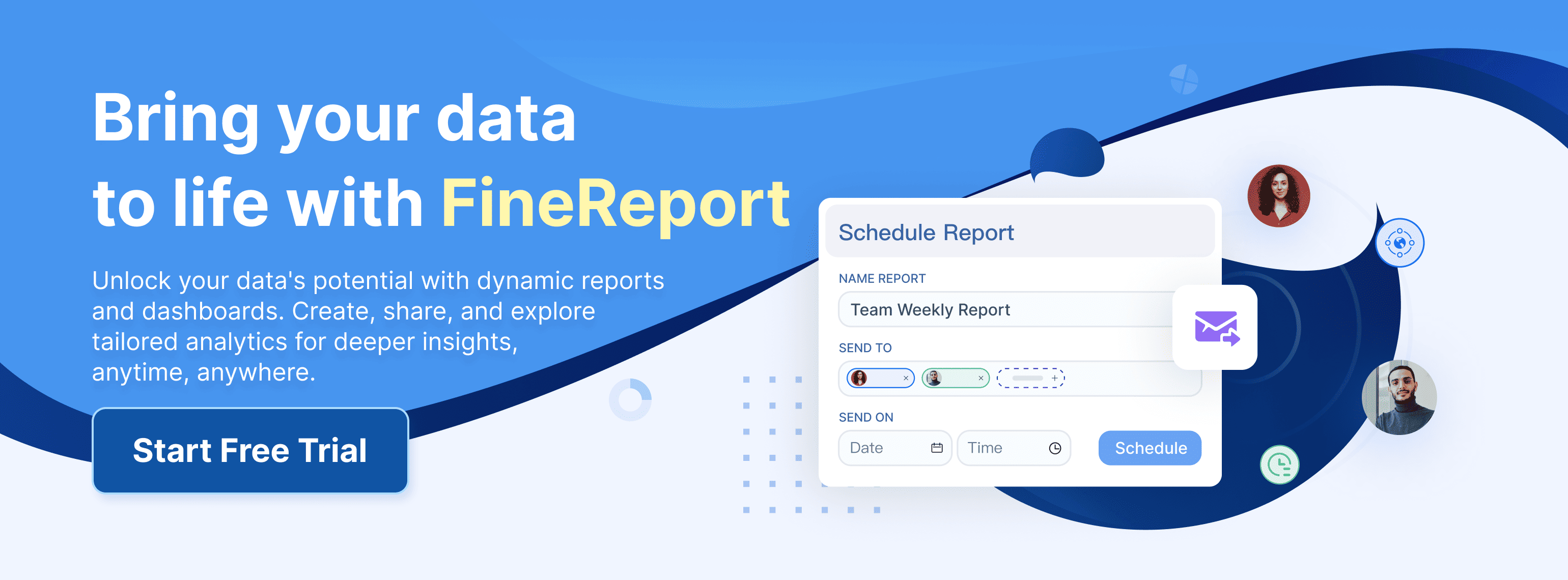KPI reporting involves tracking, analyzing, and presenting key performance indicators to measure how well your business is performing. It acts as a performance tracking tool, offering a clear view of your progress toward specific goals. A well-structured KPI report serves as a scorecard, helping you assess whether your strategies are effective. By focusing on quantifiable metrics, this type of reporting provides actionable insights that guide you in making informed decisions and improving outcomes. With the right key performance indicator data, you can identify strengths, address weaknesses, and stay aligned with your objectives.

Key Takeaways
- KPI reports help you check and study important business numbers.
- Looking at KPI reports often helps you decide and plan better.
- Good charts and graphs make KPI data simple for your team.
- Matching KPIs to your goals makes every number help your success.
- Simple KPI reports stay clear and avoid confusing your audience.
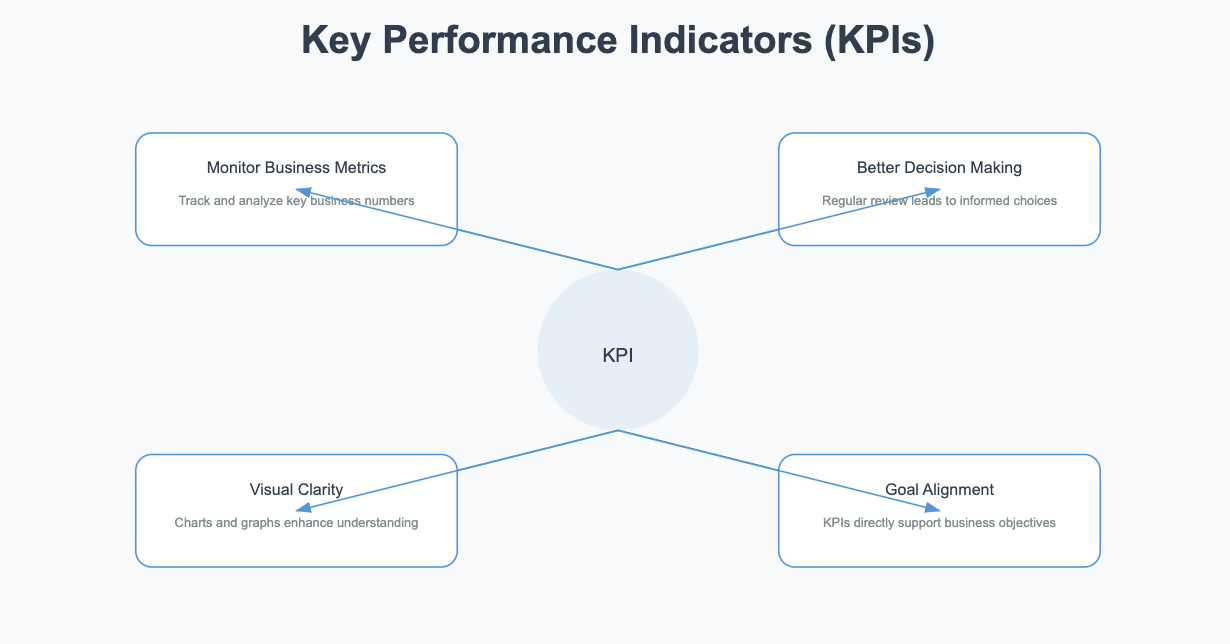
Why KPI Reporting is Important
Improves Decision-Making
KPI reporting empowers you to make informed decisions by providing data-driven insights. According to a 2025 Gartner study, "Organizations using structured KPI frameworks achieve 35% faster decision-making cycles compared to those relying on ad-hoc reporting." This underscores how systematic KPI tracking reduces ambiguity and accelerates strategic actions.
When you track key metrics, you gain a clear understanding of your business's performance. This clarity helps you identify trends, measure progress, and detect areas that need improvement. For example:
- KPIs allow you to evaluate employee performance, boosting engagement and morale.
- They highlight skill gaps, enabling you to address underperformance effectively.
- By analyzing patterns over time, you can predict future outcomes and plan accordingly.
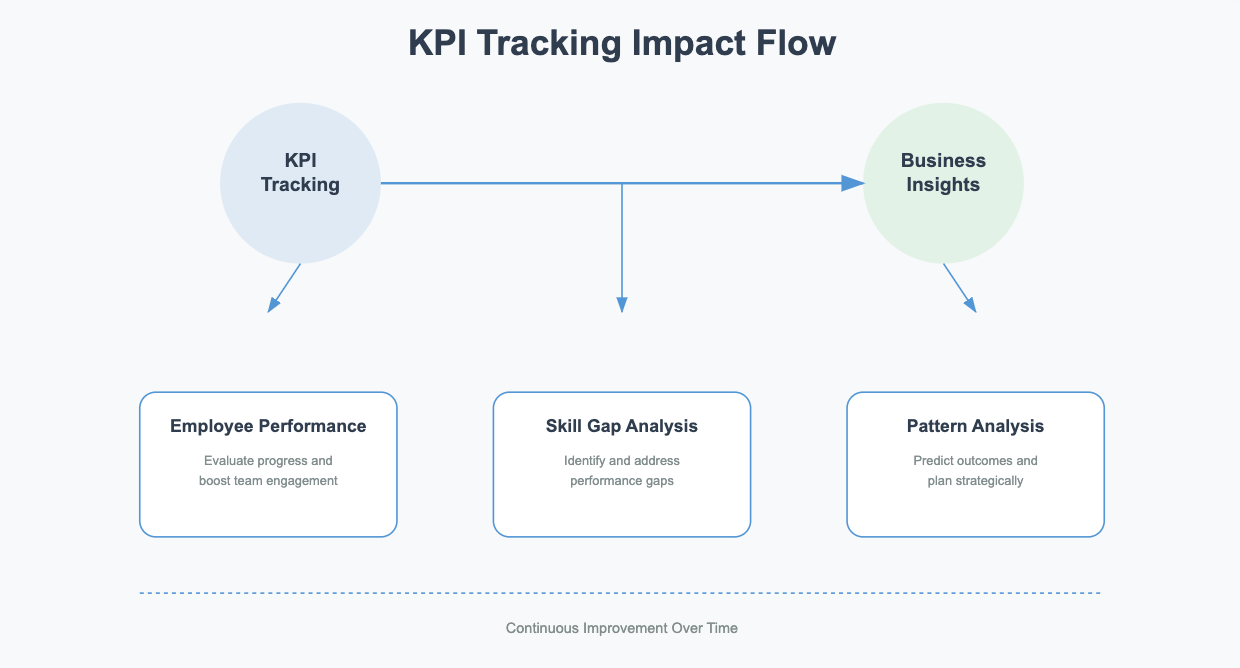
Consider how businesses across industries use KPIs to guide decisions. In the financial sector, metrics like revenue growth rate and ROI help assess profitability. Retailers rely on KPIs such as sales volume and product margins to optimize operations. These examples demonstrate how KPI reports serve as a foundation for strategic planning and operational success.
| Industry | KPI Examples |
|---|---|
| Financial | Revenue growth rate, Gross profit margin, Return on investment (ROI), Debt-to-equity ratio |
| Retail | Average transaction value (ATV), Sales volume, Product margins, Average shipping rate |
| Manufacturing | Defect rate, Overall equipment effectiveness (OEE), Capacity utilization, Cost of downtime |
Tracks Progress Toward Goals
KPI reporting provides a structured way to measure progress toward your goals. By monitoring specific metrics, you can assess whether your strategies are working. This process ensures you stay aligned with your long-term objectives.
- KPI reports give you an accurate picture of your performance.
- They allow you to measure results against predefined goals.
- Tracking progress helps you identify successes and address failures.
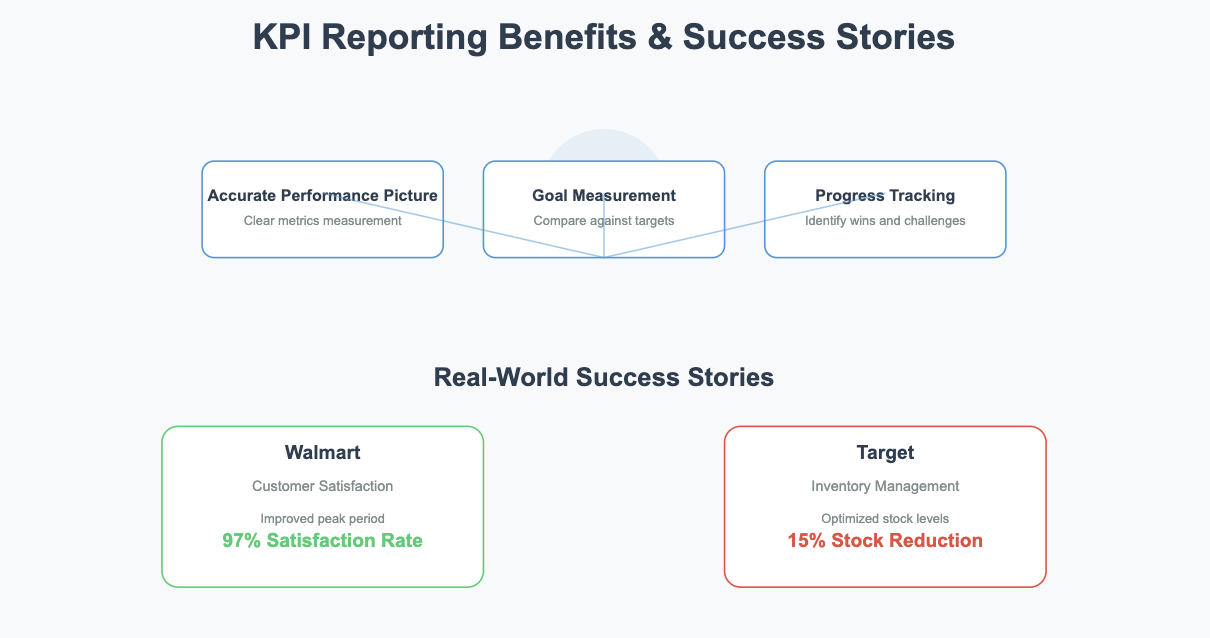
For instance, Walmart used KPIs to improve customer satisfaction during peak periods, achieving a 97% satisfaction rate. Similarly, Target optimized its inventory management by reducing excess stock by 15%. These examples highlight how tracking KPIs can lead to measurable improvements in business outcomes.
Tip: Regularly reviewing your KPI reports ensures you stay on track and make necessary adjustments to meet your targets.
Enhances Operational Efficiency
KPI reporting enhances efficiency by identifying bottlenecks and streamlining processes. Operational metrics such as cycle time, machine downtime rate, and employee utilization rate provide valuable insights into your daily activities. For example:
- Monitoring cycle time helps you improve production speed.
- Tracking absenteeism rates identifies disengaged employees.
- Measuring cash conversion cycles ensures better financial management.
| Metric Name | Description |
|---|---|
| Cycle Time | Tracks the average time to produce a product, aiding in production efficiency. |
| Machine Downtime Rate | Combines scheduled and unscheduled downtime to assess asset replacement needs. |
| Absenteeism Rate | Helps identify disengaged employees by tracking how many days employees miss work. |
By focusing on these metrics, you can reduce inefficiencies, cut costs, and improve overall productivity. KPI reports act as a roadmap, guiding you toward operational excellence.
Aligns Teams and Objectives
KPI reporting plays a vital role in aligning your teams with your business objectives. It ensures that everyone understands their responsibilities and how their efforts contribute to the bigger picture. When you use KPIs effectively, you create a shared sense of purpose across your organization.
To begin with, KPI reporting fosters awareness. It helps your team members understand what the KPIs are and why they matter. This clarity motivates them to focus on their specific goals. For example, a marketing team tracking conversion rates knows exactly how their efforts impact sales growth. Similarly, a customer service team monitoring first response time can see how their performance improves customer satisfaction.

Accountability is another key benefit. When individuals and teams take ownership of their KPIs, they feel more responsible for their contributions. For instance, tracking employee engagement scores in human resources encourages team leaders to actively improve workplace morale. This sense of accountability drives better results.
KPI reporting also promotes cross-departmental cohesion. It aligns different teams under a unified strategy, leveraging their strengths for collective success. For example:
- Sales and marketing teams can collaborate on metrics like customer acquisition cost and monthly sales growth.
- Operations and production teams can work together to improve on-time delivery rates and reduce defective product rates.
- Customer service teams can focus on retention rates while human resources track employee turnover and training participation.
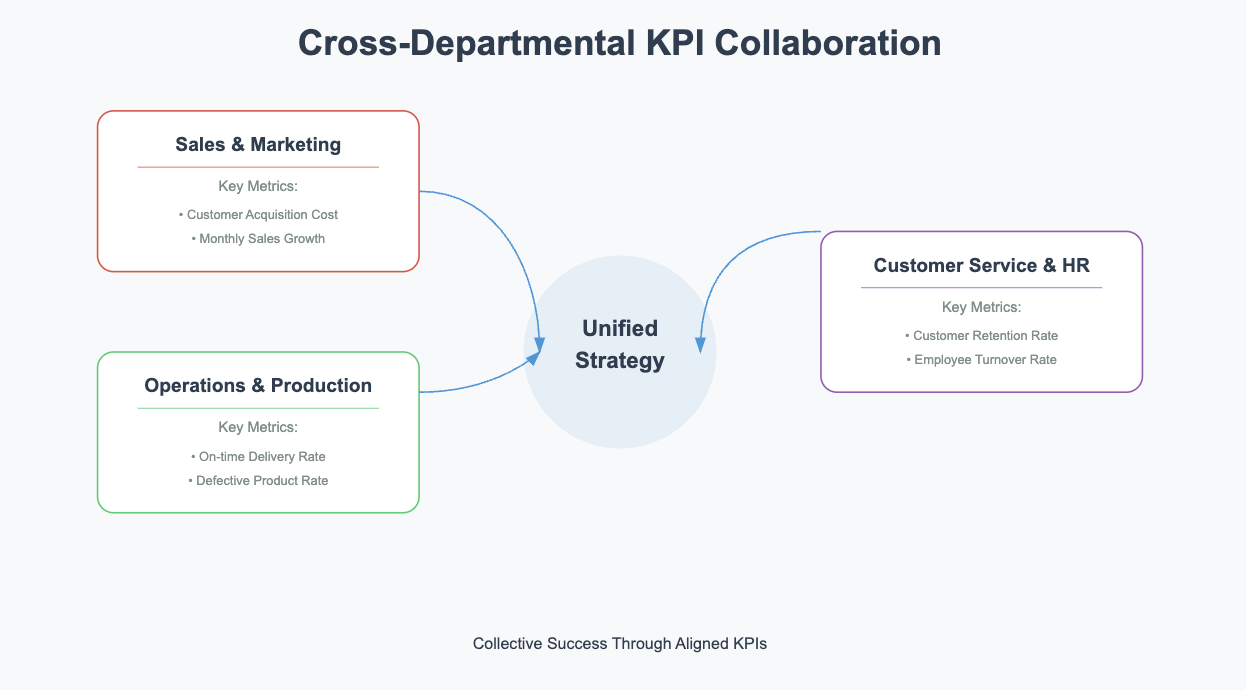
Real-time insights from KPI reporting allow your teams to adjust strategies promptly. This prevents delays and keeps everyone on track. By aligning your teams and objectives, you create a more efficient and goal-oriented organization.
Tip: Regularly share KPI reports with your teams to maintain transparency and ensure everyone stays aligned with your business goals.
Types of KPI Reporting
Strategic KPI Reporting
Strategic KPI reporting focuses on high-level metrics that align with your long-term business goals. These reports are designed for executives and decision-makers who need a clear overview of the organization's performance. Strategic KPIs, such as revenue growth rate or market share, help you evaluate whether your strategies are effective in achieving your objectives.
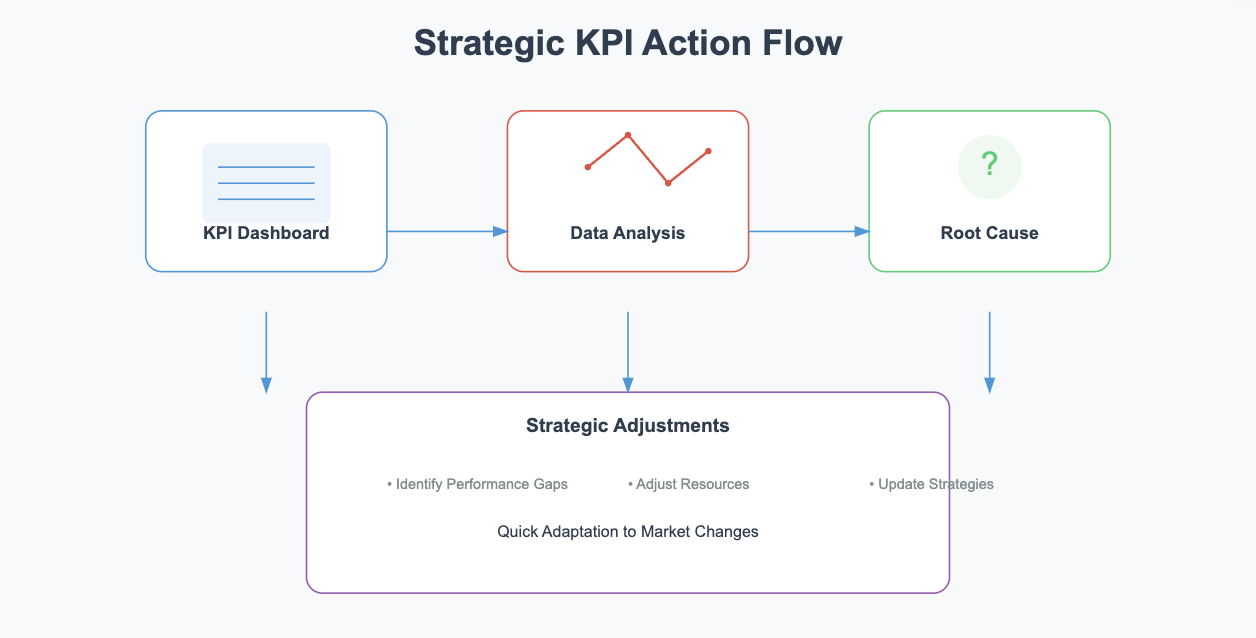
This type of reporting provides actionable insights that allow you to adapt to market changes quickly. For example, if your revenue growth rate is below expectations, you can identify the root cause and adjust your strategy to prevent further losses. Strategic KPI dashboards often include visualizations that make it easier to interpret complex data.
Note: Strategic KPI reports are essential for guiding executive decisions and ensuring your business stays on track toward its long-term vision.
Operational KPI Reporting
Operational KPI reporting focuses on the day-to-day activities of your business. These reports track specific metrics that measure the efficiency and effectiveness of your operations. For instance, in the manufacturing industry, you might monitor the number of defects per employee or the hours of overtime worked.
Different industries benefit from operational KPI reporting in unique ways:
| Industry | Key Performance Indicators (KPIs) |
|---|---|
| Travel and Tourism | Customer satisfaction levels, Sales conversion rates, Percentage of bookings made online |
| Manufacturing | Number of defects per employee, Number of hours overtime, Quality vs. quantity metrics |
| Retail | Sales per square foot, Inventory turnover, Customer Satisfaction Score, Conversion rate |
Operational KPI dashboards provide real-time insights, enabling you to address inefficiencies immediately. For example, tracking customer satisfaction levels in retail helps you improve service quality and retain customers.
Analytical KPI Reporting
Analytical KPI reporting focuses on historical data to uncover trends and patterns. This type of reporting helps you understand the factors driving your performance and make data-driven decisions. Analytical KPIs often include metrics like customer lifetime value or churn rate, which provide deeper insights into your business's health.
Several tools can help you create effective analytical KPI dashboards:
- Tableau: Converts data into graphical KPIs for real-time performance measurement.
- Google Analytics: Monitors web-based KPIs and provides detailed reports.
- Klipfolio: Develops real-time dashboards for performance management.

These tools allow you to analyze large datasets and identify opportunities for improvement. Analytical KPI reports are particularly useful for businesses looking to refine their strategies and optimize their operations.
Tip: Use analytical KPI dashboards to gain a competitive edge by identifying trends before your competitors do.
For advanced analytics, FineBI’s predictive modeling capabilities allow businesses to forecast churn rates or revenue trends directly from historical KPI data, aligning with Gartner’s emphasis on "augmented analytics for proactive decision-making."
Examples of KPIs by Business Function
Marketing KPIs
Marketing KPIs help you measure the effectiveness of your campaigns and strategies. These metrics provide insights into how well your efforts attract and retain customers. For example, Customer Lifetime Value (CLV) estimates the total revenue you can expect from a single customer over their relationship with your business. Another key metric, Customer Acquisition Cost (CAC), calculates the cost of acquiring a new customer.
| KPI Name | Definition | Formula |
|---|---|---|
| Customer Lifetime Value | Estimates the total revenue a business can expect from a single customer. | Average Purchase Value x Purchase Frequency x Customer Lifespan |
| Customer Acquisition Cost | Calculates the cost associated with acquiring a new customer. | Total Sales and Marketing Costs / Number of New Customers Acquired |
Tracking these KPIs ensures you allocate resources effectively and maximize your return on investment.
Sales KPIs
Sales KPIs focus on revenue generation and sales team performance. Metrics like Repeat Purchase Rate (RPR) measure the percentage of customers who make multiple purchases. This KPI helps you understand customer loyalty. Another important metric, Net Promoter Score (NPS), evaluates customer loyalty by asking how likely they are to recommend your products or services.
| KPI Name | Definition | Formula |
|---|---|---|
| Repeat Purchase Rate | Measures the percentage of customers who make more than one purchase. | (Number of Repeat Customers / Total Number of Customers) x 100 |
| Net Promoter Score | Evaluates customer loyalty through recommendations. | % Promoters - % Detractors |
Financial KPIs
Financial KPIs track the financial health of your business. Metrics like Customer Churn Rate monitor the percentage of customers who stop doing business with you. A high churn rate signals the need for better retention strategies. Another critical metric, Customer Retention Rate, measures the percentage of customers you retain over a specific period.
| KPI Name | Definition | Formula |
|---|---|---|
| Customer Churn Rate | Tracks the percentage of customers who stop doing business with you. | (Number of Customers Lost / Total Number of Customers) x 100 |
| Customer Retention Rate | Measures the percentage of customers retained over a specific period. | ((End Customers - New Customers) / Start Customers) x 100 |
Monitoring these KPIs ensures your business remains financially stable and competitive.
Customer Service KPIs
Customer service KPIs measure how well your team meets customer needs. First Contact Resolution (FCR) tracks the percentage of issues resolved on the first contact. This KPI reflects your team’s efficiency. Another useful metric, Customer Satisfaction Score (CSAT), measures the percentage of satisfied customers.
| KPI Name | Definition | Formula |
|---|---|---|
| First Contact Resolution | Measures the percentage of issues resolved on the first contact. | (Number of Issues Resolved on First Contact / Total Number of Issues) x 100 |
| Customer Satisfaction Score | Measures the percentage of satisfied customers. | (Number of Satisfied Customers / Number of Survey Responses) x 100 |
These KPIs help you improve customer experiences and build long-term loyalty.
Tip: Regularly reviewing these KPIs ensures you stay informed about your business performance and make data-driven decisions.
How to Create an Effective KPI Report
Define Clear Business Goals
Creating an effective KPI report starts with defining clear business goals. You need to establish a solid foundation by aligning your KPIs with your strategic objectives. This ensures that every metric you track contributes directly to your success. Follow these steps to set up your goals effectively:
- Build reliable systems to gather accurate and timely data.
- Decide on a regular schedule for KPI reporting.
- Review data consistently to identify trends and actionable insights.
- Share KPI results with stakeholders to maintain transparency.
- Periodically evaluate your KPIs to ensure they remain relevant.

Additionally, automate data collection and reporting to save time and reduce errors. Use real-time dashboards to monitor progress and make adjustments as needed. When your KPIs align with your goals, your performance tracking tool becomes a powerful asset for driving growth.
Select Relevant KPIs
Choosing the right KPIs is crucial for meaningful reporting. Start by ensuring that your KPIs reflect your business's strategic goals. They should also align with your company's growth stage. For example, a startup might focus on customer acquisition, while an established business may prioritize retention.
Here’s a simple checklist to guide your selection:
- Align KPIs with your business goals.
- Choose metrics that match your current growth stage.
- Focus on attainable and measurable KPIs.
- Avoid vanity metrics that don’t drive meaningful progress.
- Select KPIs that provide actionable insights.
For instance, tracking customer satisfaction scores can help improve service quality, while monitoring revenue growth rates ensures financial stability. By selecting relevant KPIs, you create a report that highlights what truly matters for your business.
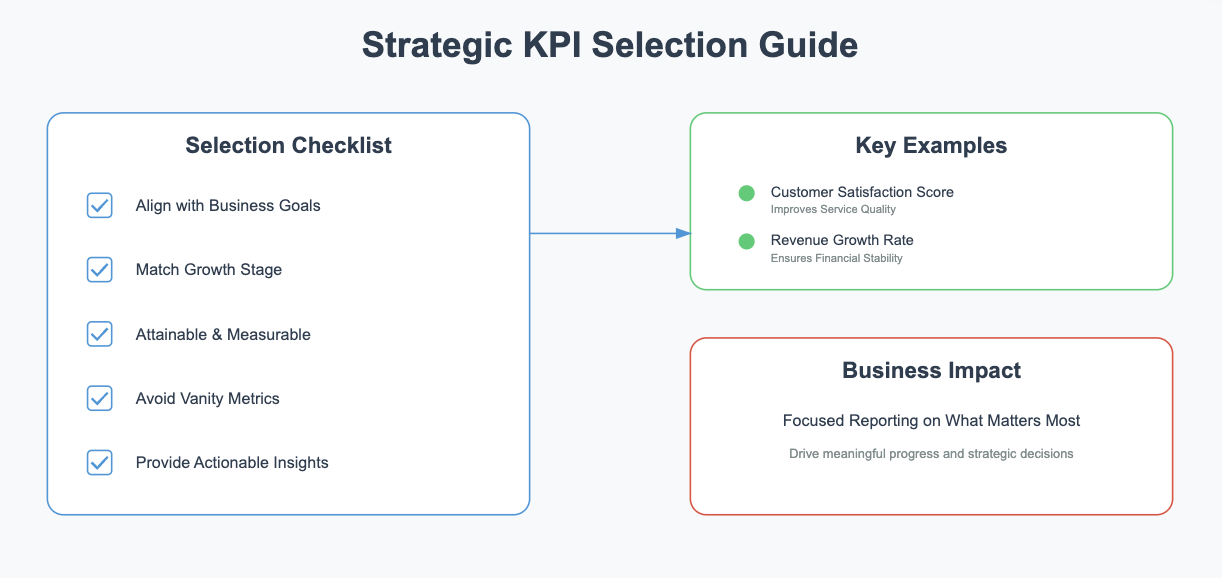
Gather Accurate Data
Accurate data is the backbone of any effective KPI report. IDC’s 2025 report highlights that "automated data integration tools reduce manual errors by 60%." Platforms like FineDataLink streamline data pipelines by unifying disparate sources (e.g., CRM, ERP) into a single governance layer, ensuring consistency and reliability for KPI reporting.
Without reliable information, your insights may lead to poor decisions. To ensure data accuracy, keep your process simple and set clear objectives. Consistency is key—use the same methods and tools to collect data across all departments.
Coordinate with your team to understand how different KPIs relate to one another. For example, sales metrics like conversion rates often impact marketing KPIs such as customer acquisition costs. Embrace digital tools to streamline data collection and improve accessibility. Regularly review your data to identify discrepancies and maintain accuracy.

When you prioritize accurate data, your KPI dashboards become a reliable source for performance tracking. This allows you to make informed decisions and stay ahead of your competition.
Choose the Right Visualization Tools
Choosing the right visualization tools is essential for creating effective KPI reports. The right tools help you present data in a way that is easy to understand and actionable. Visualization tools transform raw data into meaningful insights, allowing you to track performance and make informed decisions.
Several tools stand out for their ability to display KPI data effectively:
| Tool | Features |
|---|---|
| Tableau | Converts data into graphical KPIs, helping you evaluate performance and improve outcomes. |
| Google Analytics | Monitors KPIs in real time, offering detailed dashboards for performance tracking. |
| Klipfolio | Creates real-time dashboards, integrating data for better decision-making. |
| Power BI | Centralizes data, supports custom dashboards, and integrates with Microsoft products. |
| FineReport | Offers drag-and-drop dashboards with 100+ visualization templates, ideal for enterprises needing seamless SAP/Salesforce integration. |
| FineBI | Combines self-service analytics with AI-driven insights, enabling non-technical users to build dynamic KPI dashboards in minutes. |
| Qlik Sense | Enables real-time data exploration with a library of visualization options. |
| AWS QuickSight | Uses AI to analyze large datasets and create dynamic dashboards. |
These tools allow you to customize dashboards and track KPIs in real time. For example, Tableau and Power BI are excellent for creating graphical representations of sales or marketing KPIs. Tools like Geckoboard and Klipfolio are ideal for operational KPI tracking.
When selecting a tool, consider your business needs and the type of KPIs you want to monitor. A well-chosen visualization tool ensures your reports are clear, engaging, and actionable.
Tip: Use interactive dashboards to make your KPI data more accessible and easier to interpret.
Review and Refine the Report Regularly
Regularly reviewing and refining your KPI reports ensures they remain relevant and effective. This process helps you adapt to changes in your business environment and maintain alignment with your goals.
Here are some key benefits of refining your KPI reports:
- Improve employee engagement and morale by setting clear expectations and creating accountability.
- Close learning gaps by identifying areas of underperformance and addressing skill deficiencies.
- Measure performance accurately to evaluate progress toward your objectives.
- Make better decisions using data-driven insights from your KPI reports.
- Detect patterns over time by comparing data across different periods.
- Set specific goals and plan effectively by using updated and relevant KPIs.
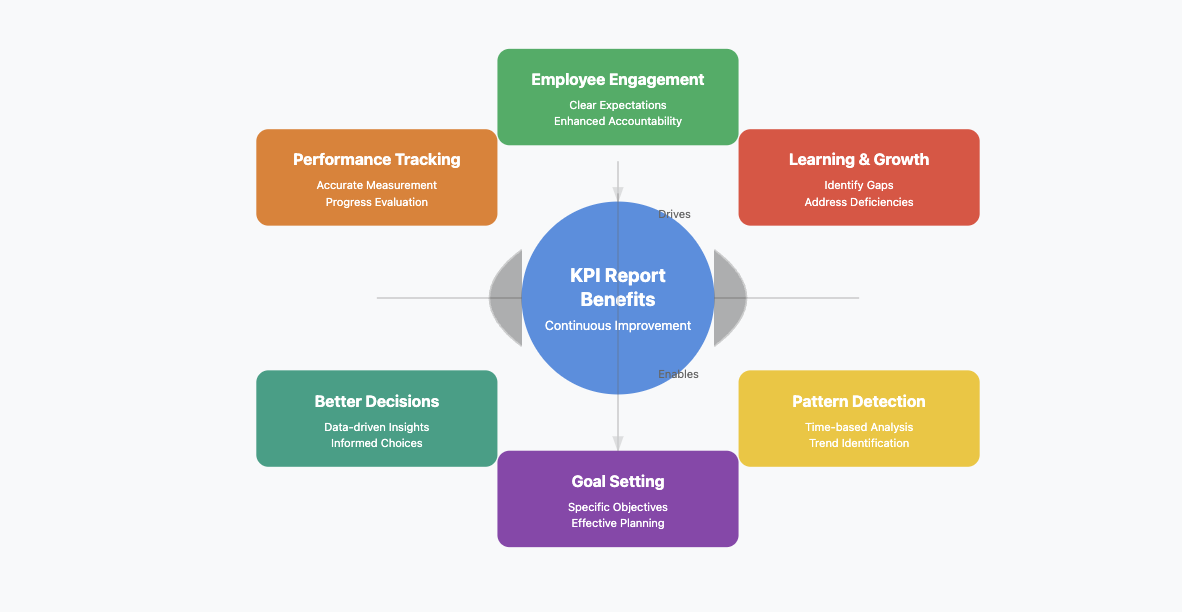
For example, if your customer satisfaction score drops, refining your report can help you identify the root cause. You might discover that response times have increased, prompting you to adjust your customer service strategy. Similarly, tracking financial KPIs like revenue growth rate over time can reveal trends that inform your budgeting decisions.
To refine your reports, start by reviewing your KPIs regularly. Remove metrics that no longer align with your goals and replace them with more relevant ones. Use feedback from your team to improve the report’s structure and clarity.
Tip: Schedule periodic reviews of your KPI reports to ensure they continue to provide actionable insights.
Best Practices for KPI Reporting
Keep Reports Simple and Focused
Simplifying your KPI reports ensures they remain clear and actionable. Overloading your report with unnecessary data can overwhelm your audience and dilute its purpose. To keep your reports focused, follow these principles:
- Define your KPIs strategically. Ensure they are SMARTER: specific, measurable, achievable, relevant, time-bound, evaluated, and reviewed.
- Align your KPIs with your business goals. Each metric should drive actions that contribute to your objectives.
- Regularly review and refine your KPIs. Assess their effectiveness and adjust them based on feedback.
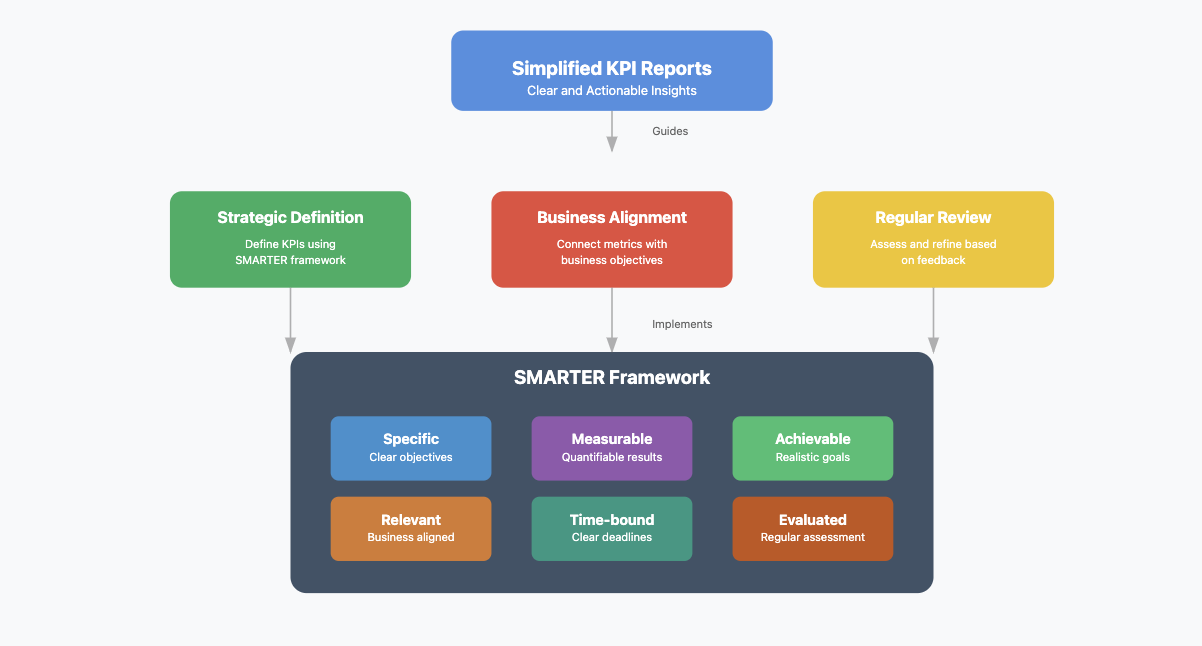
For example, if you manage a retail business, tracking metrics like sales per square foot or inventory turnover provides actionable insights. Avoid vanity metrics that do not directly impact your goals. A focused KPI report helps you make better decisions and keeps your team aligned with your strategy.
Tip: Use concise visualizations like bar charts or line graphs to present your KPIs clearly.
Ensure Data Accuracy and Consistency
Accurate and consistent data forms the backbone of effective KPI reporting. Without reliable data, your insights may lead to poor decisions. To maintain accuracy and consistency, implement these methods:
- Use data quality frameworks to establish standards.
- Conduct regular data audits to identify and correct errors.
- Automate validation checks to reduce manual errors.
- Train your team to understand data collection processes.
- Verify data sources to ensure reliability.
- Use data cleansing tools to remove inaccuracies.
- Maintain documentation for transparency.
- Establish a data governance team to oversee data quality.

For instance, automating data validation can help you detect discrepancies in sales figures before they affect your KPI dashboard. Consistent data ensures your KPI reports remain trustworthy and actionable.
Note: Regularly updating your data collection methods keeps your reporting process efficient and accurate.
Use Dashboards for Real-Time Insights
KPI dashboards simplify the process of tracking performance by centralizing all metrics in one place. FineVis specializes in real-time operational dashboards. For instance, a manufacturing client reduced machine downtime by 20% using FineVis’s live monitoring of OEE (Overall Equipment Effectiveness) KPIs, enabling instant adjustments to production schedules.
They provide real-time insights, enabling you to make informed decisions quickly. Key advantages of using dashboards include:
- Improved collaboration through shared access to data.
- Faster identification of inefficiencies using live data.
- Cost and time savings by eliminating manual reporting.
- Discovery of trends and opportunities in performance metrics.

For example, a KPI dashboard can help you monitor customer satisfaction scores in real time. If satisfaction drops, you can immediately adjust your strategy to address the issue. Dashboards also eliminate data silos, making it easier for teams to collaborate and share insights.
Tip: Choose a dashboard tool that integrates with your existing systems for seamless data tracking.
Tailor Reports to Your Audience
Tailoring your KPI reports to your audience ensures that the information you present is relevant and actionable. Different stakeholders have unique needs and priorities, so customizing your reports helps them focus on what matters most.
- Segment your audience: Provide high-level summaries for executives who need an overview of performance. Offer detailed analysis for teams that require specific insights to improve their operations.
- Customize metrics: Adjust the KPIs to match the decision-making processes of each group. For example, a marketing team might focus on conversion rates, while executives prioritize revenue growth.
- Visualize effectively: Use clear and intuitive visuals like bar charts or pie graphs to simplify complex data. This makes it easier for stakeholders to grasp key insights quickly.
- Contextualize data: Add context to your KPIs by explaining their significance. Highlight trends or benchmarks to show how performance compares over time. For instance, if customer satisfaction scores drop, explain the factors contributing to the decline.
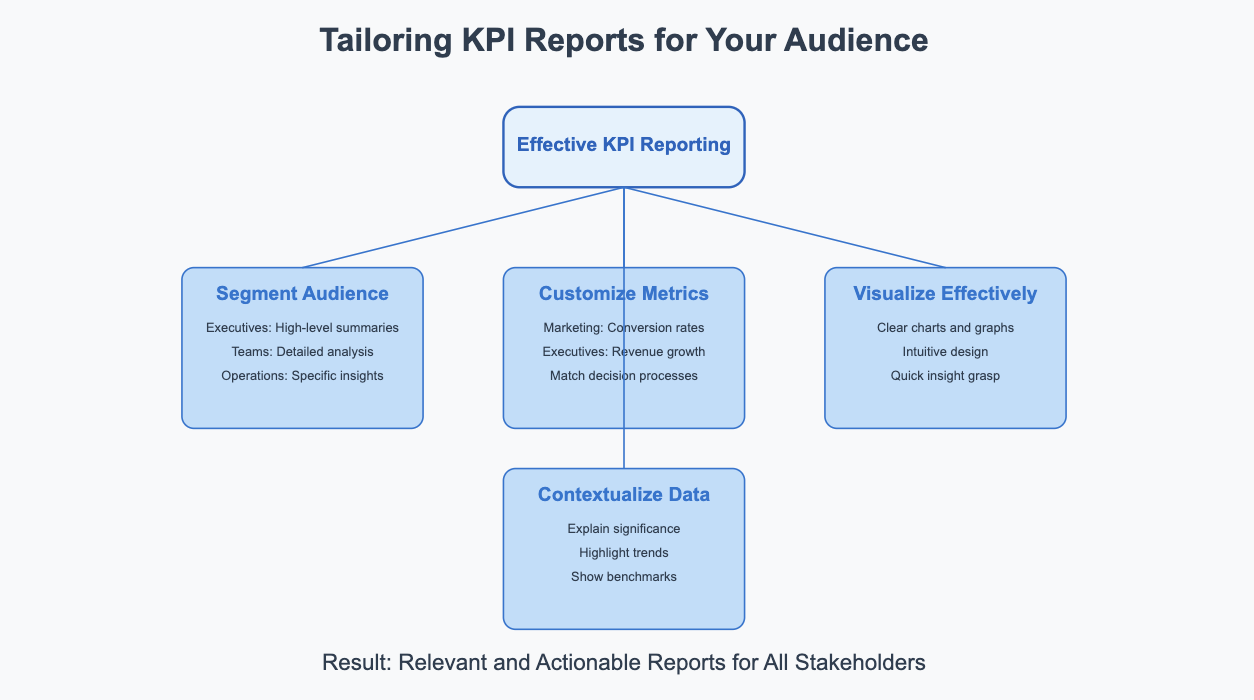
Providing context is especially important when KPIs reveal unexpected results. It helps your audience understand the underlying causes and take appropriate action. Including historical data or industry benchmarks can further enhance the relevance of your reports.
To refine your reports, gather feedback from your audience. Ask if the information is clear and relevant. Measure how the KPIs influence their decisions and engagement. Use this input to improve future reports, ensuring they remain impactful and aligned with your audience's needs.
Tip: Always consider your audience's goals and challenges when designing KPI reports. This approach ensures your reporting drives meaningful action.
Regularly Update and Review KPIs
Regular updates and reviews of your KPIs are essential for maintaining their effectiveness. Business environments change constantly, and outdated metrics can lead to poor decisions. Reviewing your KPIs ensures they stay aligned with your goals and reflect current priorities.
Start by scheduling periodic reviews of your KPI reports. Evaluate whether each metric still serves its purpose. Remove KPIs that no longer provide value and replace them with more relevant ones. For example, a startup might shift its focus from customer acquisition to retention as it grows.
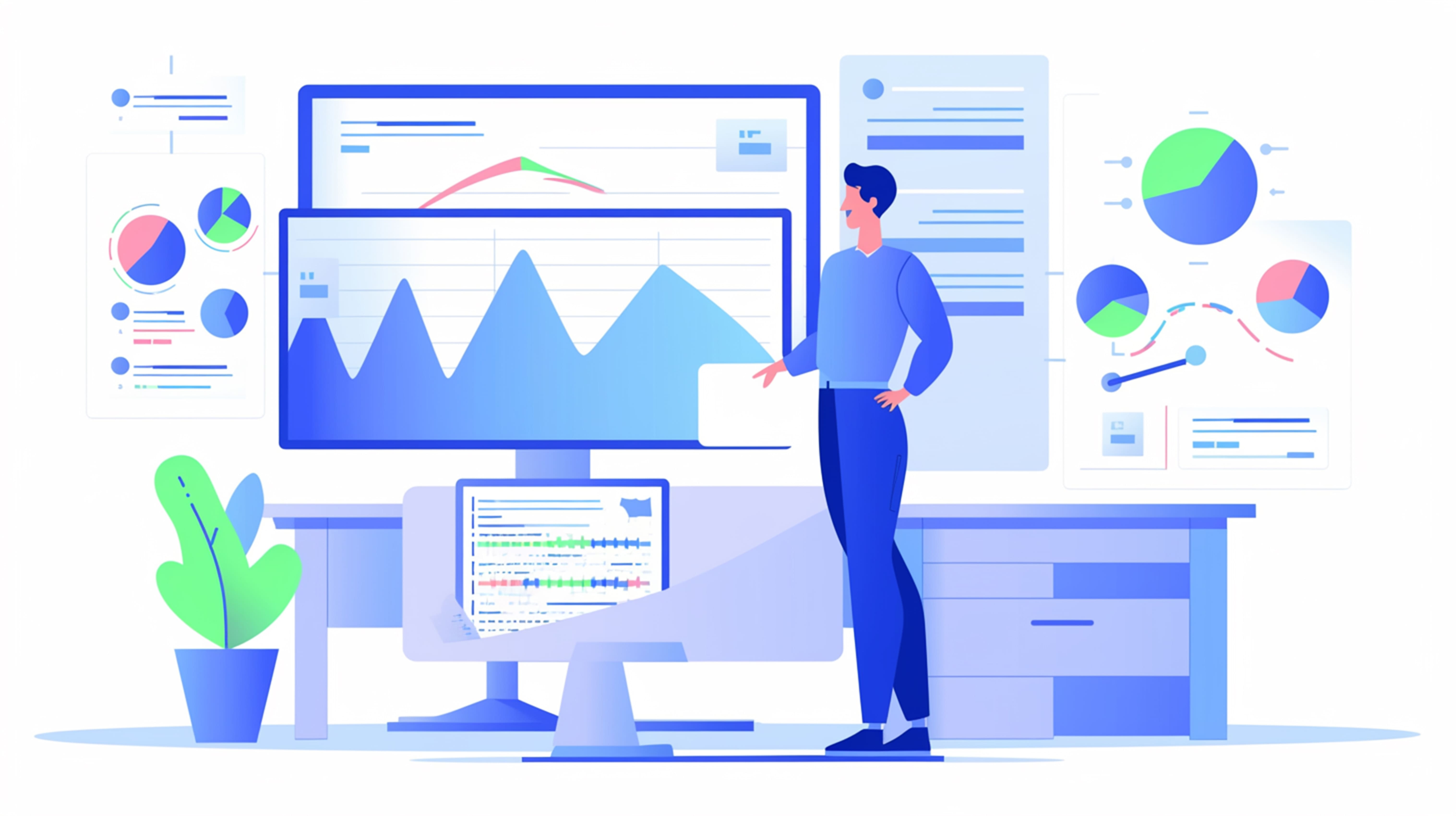
Updating your KPIs also helps you adapt to market trends. If your industry faces new challenges, adjust your metrics to address them. For instance, during an economic downturn, tracking cash flow might become more critical than monitoring expansion metrics.
Consistency in reviewing your KPIs improves decision-making. It allows you to identify patterns and trends over time. For example, tracking employee productivity monthly can reveal seasonal fluctuations, helping you plan resources more effectively.
Involve your team in the review process. Their insights can highlight gaps or suggest new metrics to track. This collaboration ensures your KPI reports remain accurate and actionable.
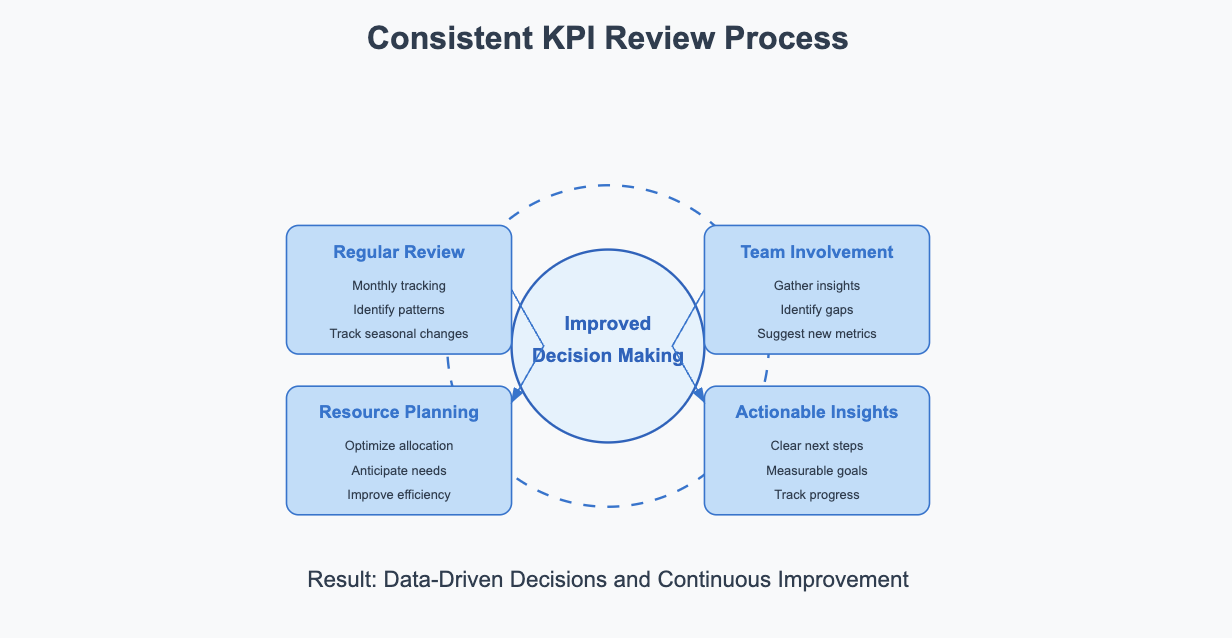
Note: Regular reviews keep your KPIs relevant and ensure your reporting adapts to your business's evolving needs.
KPI reporting plays a vital role in tracking performance, making informed decisions, and achieving business goals. By focusing on measurable metrics, you can evaluate progress, detect patterns, and set actionable goals. Businesses that implement effective KPI systems often experience long-term benefits, such as improved employee morale, better decision-making, and enhanced operational efficiency.
Starting your KPI journey doesn’t have to be overwhelming. Begin by setting up reliable data systems, reviewing metrics regularly, and sharing insights with stakeholders. Real-time dashboards and mobile accessibility make it easier to monitor performance and adapt quickly. Whether you’re analyzing marketing campaigns or financial health, a well-structured KPI report can drive growth and improve operations.
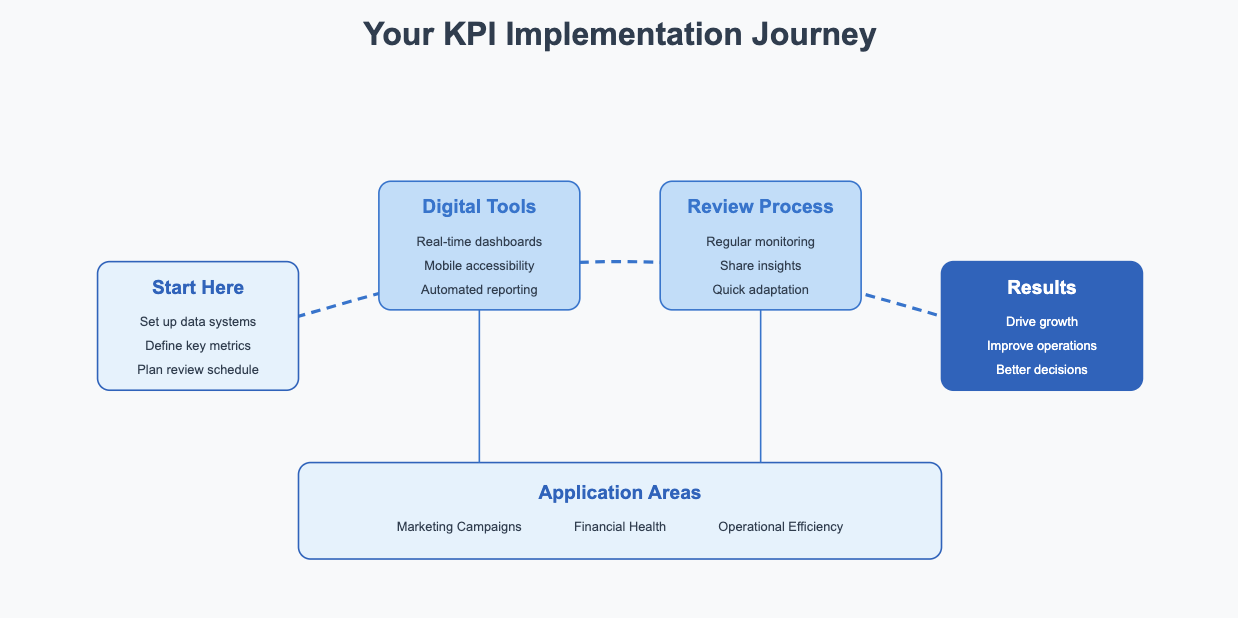
FAQ
What is the difference between a KPI and a metric?
A KPI measures progress toward a specific goal, while a metric tracks general data. For example, "monthly sales growth" is a KPI if tied to a revenue target. Metrics like "website traffic" provide insights but may not directly align with your objectives.
How often should you update KPI reports?
You should update KPI reports based on your business needs. For real-time decisions, daily or weekly updates work best. Strategic KPIs may only need monthly or quarterly reviews. Regular updates ensure your data stays relevant and actionable.
Can small businesses benefit from KPI reporting?
Yes, small businesses can use KPI reporting to track growth, improve efficiency, and make informed decisions. Simple tools like Google Sheets or free dashboard software help you monitor key metrics without requiring a large budget.
What are common mistakes in KPI reporting?
Common mistakes include tracking too many KPIs, using irrelevant metrics, and relying on inaccurate data. Avoid these by focusing on a few meaningful KPIs, ensuring data accuracy, and aligning metrics with your goals.
How do you choose the right KPIs for your business?
Start by identifying your business goals. Choose KPIs that directly measure progress toward those goals. For example, if you aim to increase customer retention, track metrics like churn rate or customer satisfaction score.
Click the banner below to experience FineReport for free and empower your enterprise to convert data into productivity!
Continue Reading About Reporting Tools
Top 15 AWS Reporting Tools for Effective Cost Management
Top 10 Ecommerce Reporting Tools for 2025

The Author
Lewis
Senior Data Analyst at FanRuan
Related Articles

What is integrated reporting and why is it important
Integrated reporting combines financial and non-financial data, offering a full view of value creation, transparency, and stakeholder trust.
Lewis
Dec 12, 2025

What Is a Weekly Sales Report and Why Does It Matter
A weekly sales report tracks sales data, highlights trends, and guides decisions. See key components and benefits of weekly sales reports for your team.
Lewis
Dec 11, 2025
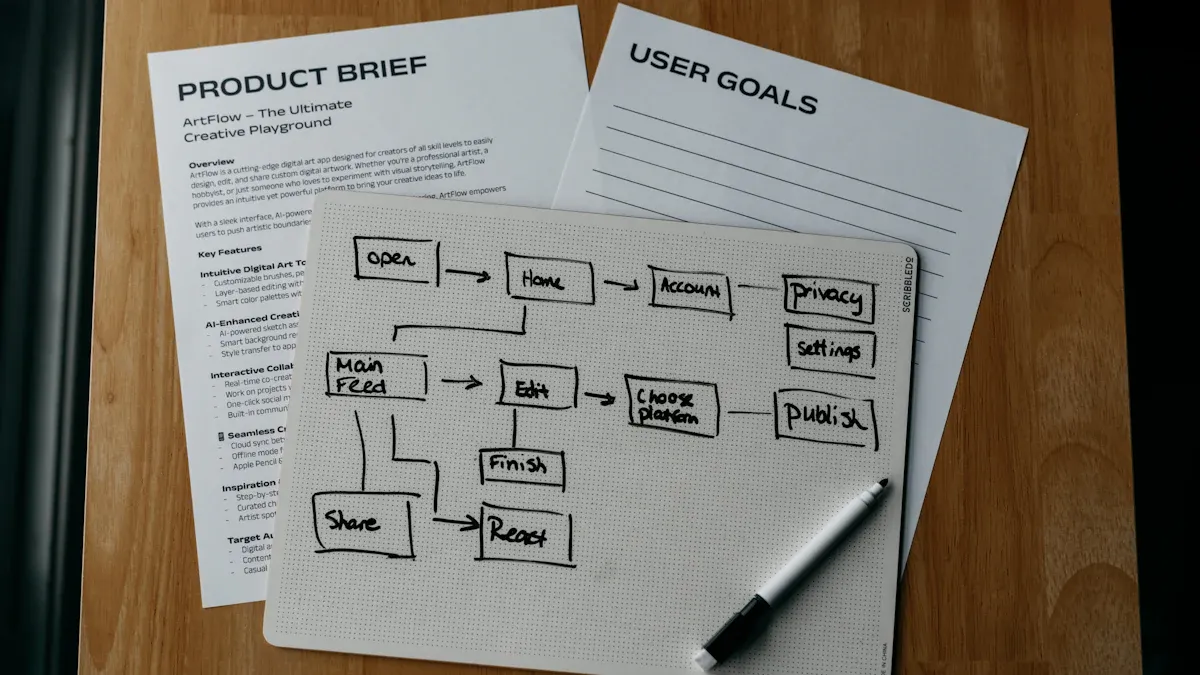
Top 9 Best Reporting Tools for ASP.NET Developers
Compare the top 9 best reporting tool for asp net projects in 2026. Find features, integration, and export options for ASP.NET and ASP.NET Core apps.
Lewis
Dec 10, 2025

